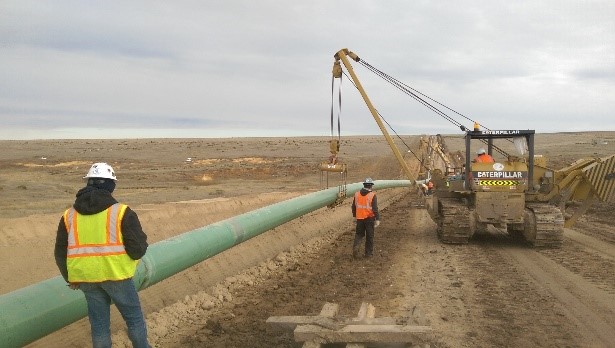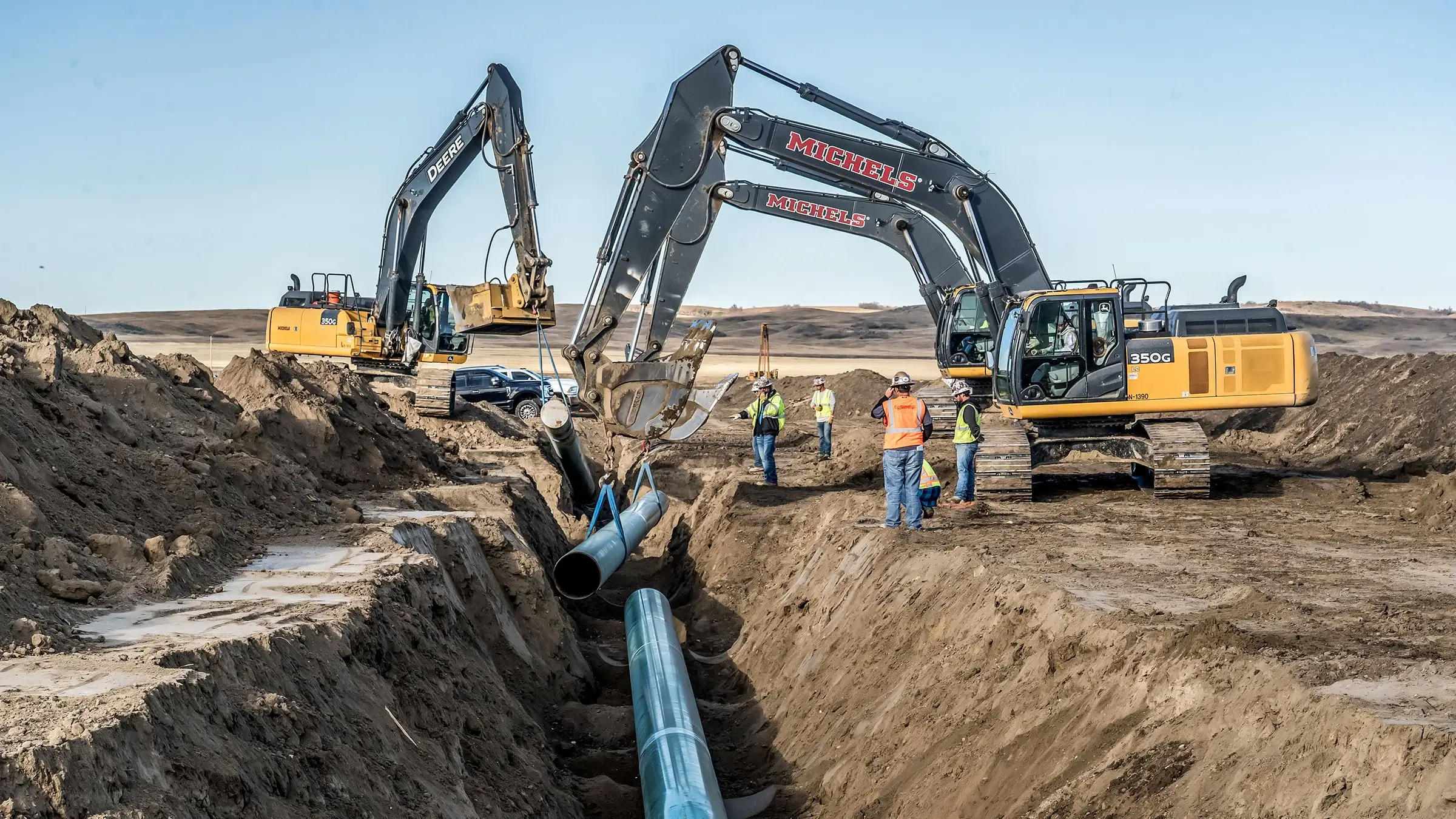How to Maintain Long-Term Performance With Creek Pipe HDPE installation
Comprehending the Basics of Pipes Installation: What You Need to Know About the Refine
Correct pipe installation is necessary for any type of pipes system. It requires mindful consideration of numerous factors, including material option and adherence to local policies. A tactical format can avoid concerns like pressure loss, while the right devices ensure effective signing up with strategies. Nevertheless, also experienced installers can make typical mistakes. Understanding these essentials can cause an extra reliable and durable system, triggering a closer consider the essential aspects involved in the process.
Choosing the Right Materials for Pipe Installation
When taking into consideration pipe installation, the option of ideal materials is essential to guaranteeing longevity and functionality. Numerous products are readily available, each offering special benefits and factors to consider. PVC pipelines are lightweight, immune to corrosion, and cost-efficient, making them ideal for domestic pipes. On the other hand, copper pipes, known for their long life and ability to hold up against heats, are often favored for home heating systems.Additionally, galvanized steel pipelines supply strength and durability, appropriate for durable applications, although they are vulnerable to corrosion over time.For below ground installments, polyethylene pipelines are favored as a result of their versatility and resistance to tension splitting. Appropriate material selection relies on the details demands of the job, consisting of stress scores, temperature variants, and the chemical nature of the liquids being moved - Creek Pipe near me. Inevitably, notified choices regarding pipe products add considerably to the overall success and durability of pipes systems
Understanding Local Building Codes and Laws
Just how can recognizing local building regulations and laws influence pipe installation? Familiarity with these codes is crucial for guaranteeing that pipe setups are secure, certified, and efficient. Local building ordinance lay out particular demands regarding materials, installation methods, and precaution, which should be complied with to avoid potential lawful concerns and costly fines.Failure to conform can result in assessments being failed, delays in job completion, or also mandated elimination of improperly installed pipes. On top of that, recognizing zoning laws and guidelines can influence the kind of materials enabled, as well as the approaches used for installation.Contractors and homeowners alike need to spend time in assessing neighborhood laws prior to commencing any type of installation project. This aggressive method not only promotes safety and security yet also boosts the general high quality and longevity of the pipes system, inevitably promoting long-lasting functionality and fulfillment.
Planning Your Pipe Format and Style
Correct preparation of pipe layout and design is necessary for accomplishing an effective pipes system. This process begins with evaluating the particular requirements of the space, considering the place of components and appliances. Exact measurements assure that pipelines are correctly transmitted, lessening bends and turns that can lead to push loss.Consideration of the flow rates and the types of products used is critical, as different products have differing toughness and compatibility with plumbing systems. Furthermore, the designer ought to make up future developments or alterations to the layout, allowing for flexibility in situation of renovations.Efficient water drainage and ventilation are additionally substantial elements of the layout, as they protect against clogs and ensure correct waste elimination. Collaboration with local structure codes ensures compliance and security, which is extremely important in any plumbing installation task.
Vital Tools and Tools for Installation
Successful pipe installation depends upon having the right tools and equipment at hand. Vital devices consist of pipe cutters for tidy cuts, wrenches for tightening up installations, and pliers for grasping and transforming pipelines. In addition, a degree guarantees pipelines are installed uniformly, while a determining tape aids in accomplishing exact lengths.For specific products, a welding torch may be required for copper pipes, while a PVC cutter is vital for plastic alternatives. Safety and security tools, such as handwear covers and safety glasses, safeguards installers from possible hazards during the process.A pipeline bender can be specifically valuable for developing smooth contours without endangering honesty, while a torque wrench warranties that links are secured to the maker's specifications.Having these devices readily offered not only assists in a smoother installation process but likewise adds to the total resilience and functionality of the pipes system. Proper equipment is vital in achieving durable outcomes.
Strategies for Correct Pipe Joining and Sealing
Achieving a secure and leak-free link between pipelines requires mindful focus to joining and securing techniques. Numerous techniques exist, each matched to various pipe materials and applications (Creek Pipe pipeline construction). For instance, welding is usually utilized for metal pipelines, making sure robust links via heat combination. On the other hand, plastic pipelines gain from solvent cement or blend welding, developing strong, permanent bonds.Threaded links are usual in both metal and plastic piping, calling for specific positioning and the use of proper sealants, such as click this Teflon tape or pipe dope, to stop leakages. Compression fittings supply one more alternative, where mechanical pressure secures the pipelines together, making them quickly disassembled for maintenance.Regardless of the approach picked, proper preparation is essential. This includes cleaning pipe ends and guaranteeing they are without debris. Implementing these techniques carefully will improve the durability and reliability of the pipe system, ultimately adding to its effective efficiency
Common Mistakes to Avoid During Installation
During pipe installation, avoiding typical mistakes is necessary for ensuring a reputable and reliable system. One regular error is stopping working to determine and reduce pipelines precisely, which can cause incorrect fittings and leaks. Additionally, overlooking to check the compatibility of materials can cause deterioration or other damage gradually. Improperly securing joints and connections can likewise create weak factors in the system, causing prospective failures.Another typical mistake is neglecting the importance of slope and drainage; pipes must be mounted at the appropriate angle to help with appropriate circulation. Inadequate support for pipes can cause sagging and tension, affecting the stability of the system. Eventually, disregarding local codes and laws can lead to pricey rework and safety and security dangers. By understanding these mistakes, installers can greatly improve the resilience and efficiency of pipe systems.
Maintenance Tips for Durable Pipe Systems
To guarantee the longevity of pipe systems, normal evaluations and cleansing are necessary practices. These steps aid identify possible issues prior to they intensify into significant troubles. In addition, utilizing appropriate insulation strategies can better protect pipes from temperature level variations and environmental aspects.
Normal Inspections and Cleaning
Regular evaluations and cleaning are vital for keeping the long life and efficiency of pipe systems. Regularly examining pipes for indications of deterioration, leakages, or blockages can aid identify prospective problems prior to they intensify into costly fixings. Cleaning pipes occasionally eliminates buildup that can restrict circulation and advertise deterioration. It is a good idea to set up evaluations at the very least as soon as a year, but more constant checks might be essential in high-usage atmospheres. Making use of expert solutions for extensive cleaning guarantees that all debris is effectively gotten rid of. In addition, maintaining documents of examinations and maintenance activities aids in tracking the system's health and wellness gradually - Creek Pipe pipeline construction. By prioritizing these techniques, homeowner can boost the integrity and lifespan of their pipe systems
Correct Insulation Methods
Reliable insulation strategies play an important role in keeping the performance and longevity of pipe systems. Proper insulation lessens warmth loss in hot water pipes and protects against freezing in cold water pipes, considerably lowering energy prices and cast iron plumbing repair prospective damage. Common materials utilized for insulation include fiberglass, foam, and rubber, each offering differing levels of thermal resistance. It is essential to ensure that insulation is applied uniformly, covering all exposed areas without gaps. Additionally, protecting insulation with ideal fasteners helps maintain its setting and effectiveness gradually. Routine examinations need to be performed to determine wear and tear, ensuring prompt replacements. By executing these techniques, pipe systems can run effectively and have an extended life span, inevitably profiting both the setting and the home owner.

Often Asked Concerns
Just how Do I Identify the Appropriate Pipe Dimension for My Project?
Figuring out the appropriate pipe dimension entails examining the task's flow requirements, pressure specifications, and the type of fluid being moved. Consulting design criteria and conducting estimations assurances ideal performance and effectiveness in the installation process.
What Are the Ecological Influences of Various Pipe Products?

Can I Mount Pipes Myself or Should I Employ an Expert?
The question of whether to mount pipelines separately or work with an expert frequently relies on the person's skill degree and task complexity. A professional may guarantee conformity with guidelines and decrease possible long-term issues.

For How Long Can I Anticipate My Pipe Installation to Last?
The longevity of pipe installation differs substantially, generally lasting 20 to 100 years, depending upon products, installation high quality, and upkeep. Routine evaluations and correct care can improve durability and stop premature failures.

What Are the Indicators of a Failing Pipe System?
Indicators of a stopping working pipe system include frequent leaks, unusual water pressure changes, stained water, mold and mildew growth, and relentless moisture. Property owners must keep an eye on these indications to stay clear of expensive go to the website damages and guarantee prompt fixings are made.